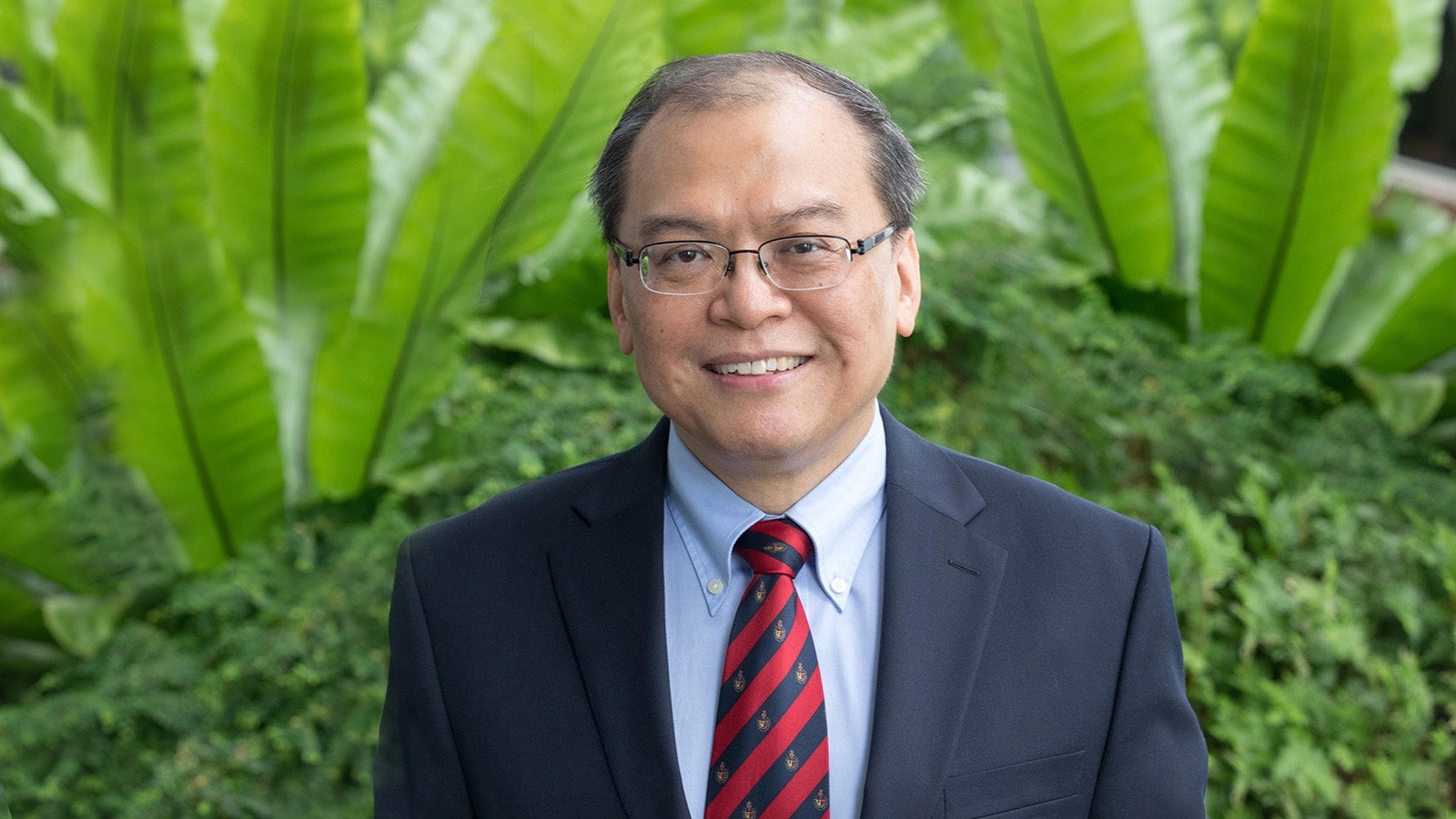In recognition of his outstanding professional achievement and service, Electrical and Computer Engineering (ECE) alumnus Dim-Lee Kwong was awarded the Rice ECE Outstanding Engineering Alumni Award, given annually since 1974.
“I am honored,” Kwong said, “to receive this award. I feel more honored that I can still be part of this great institution.”
In 1980 Kwong began his research in laser-semiconductor interactions as a doctoral student in electrical engineering (EE) at Rice. This was the start of a 40-year research career in semiconductor technology and its applications. His research would earn him the 2012 Singapore President’s Science and Technology Medal, the highest award given by the republic.
Kwong was awarded his Ph.D. in EE from Rice in 1982 after earning his M.S. in nuclear engineering and B.S in physics from National Tsing Hwa University in Taiwan in 1979 and 1977, respectively.
He chose Rice, Kwong said, to gain a solid understanding of electrical engineering and build on his knowledge of physical science, mathematics, computing and technology.
Being a foreign student and coming to the U.S. for the first time in 1979, I wanted to go to a place that was small but prestigious and gave me the tools to succeed for the rest of my life. Coming here was not a hard decision at all. In fact, it was one of the best decisions I made. Rice was the perfect place for me and met all my expectations and goals, Kwong said.
After graduating from Rice, Kwong was hired as an assistant professor of ECE at the University of Notre Dame, then as the Earl N. and Margaret Bransfield Endowed Professor of ECE at the University of Texas in Austin, before becoming the Temasek Professor at the National University of Singapore.
In 2005 Kwong joined the Agency for Science, Technology and Research (A*STAR) in Singapore as executive director of the Institute of Microelectronics, where he recently became the chief scientific officer. Founded in 1991, IME is a research institute under A*STAR that focusing on innovations in silicon photonics, sensors and actuators, wide-bandgap semiconductors and advanced packaging.
Kwong helped build R&D partnerships between IME and the semiconductor industry. Recently, Kwong helped IME-STMicroelectronics establish R&D collaboration in the field of silicon carbide (SiC) for power-electronics applications in the automotive and industrial markets.
In 2020, he led IME-STMicroelectronics as it established the world’s first “Lab-in-Fab,” an 8-inch (200 mm) ST manufacturing facility in Singapore. The initiative hopes to transform the piezoelectric (Piezo) microelectromechanical system (MEMS) market. The facility houses the A*STAR research institute and the Japanese manufacturing-tool vendor ULVAC. The collaborating companies benefit by having the lab and the fabrication in one location. Together, they combine R&D and high-volume manufacturing capabilities to accelerate the transition from concept to production, and advance the adoption of Piezo MEMS in new applications like AR/VR, medical, and 3D printing.
In 2017, Kwong helped found Advanced Micro Foundry (AMF), an off shoot of IME. It became the world's first commercial micro foundry that can do high-mix, high-value, low-volume manufacturing in silicon photonics. AMF has a value of about $300 million (U.S.) and created more than 150 jobs.
Kwong established the Silicon Photonics program in 2007, which led IME to develop a technology platform based on eight-inch complementary metal oxide semiconductor technology. The program attracted almost all the key multinational corporations in data center and optical communications as customers, supporting almost 70 percent of the integrated photonics industry.

